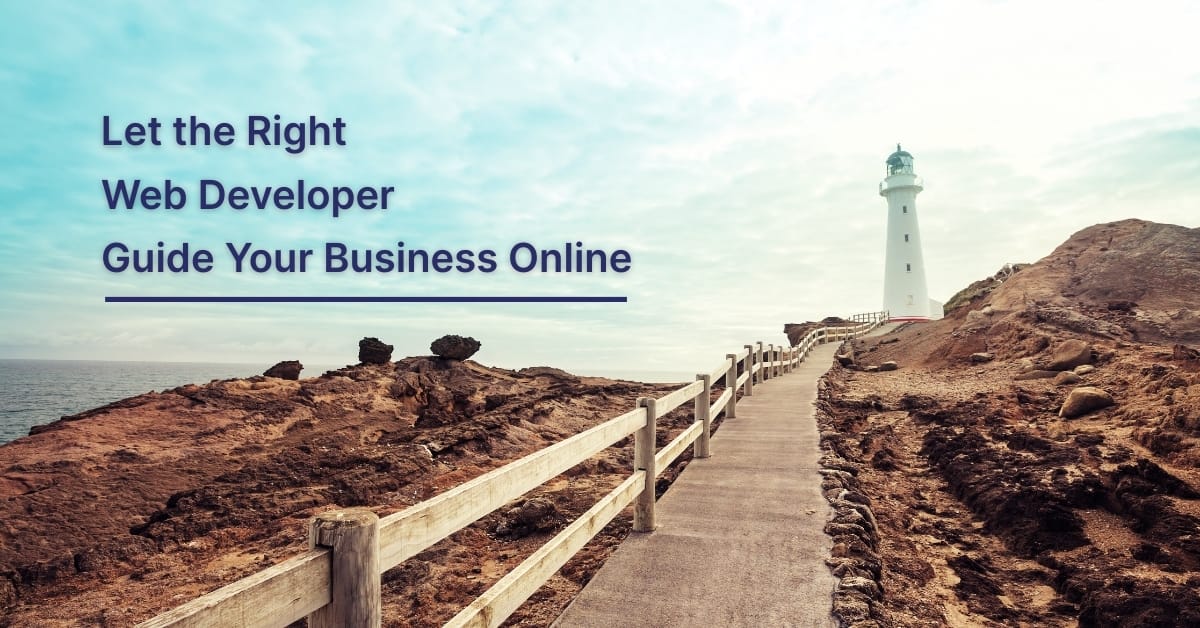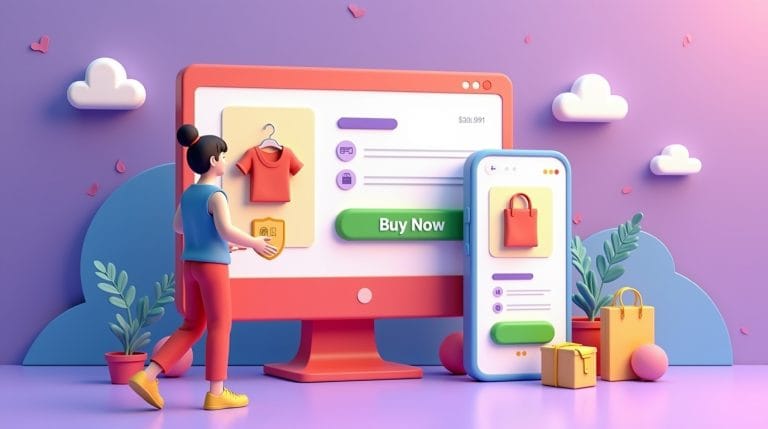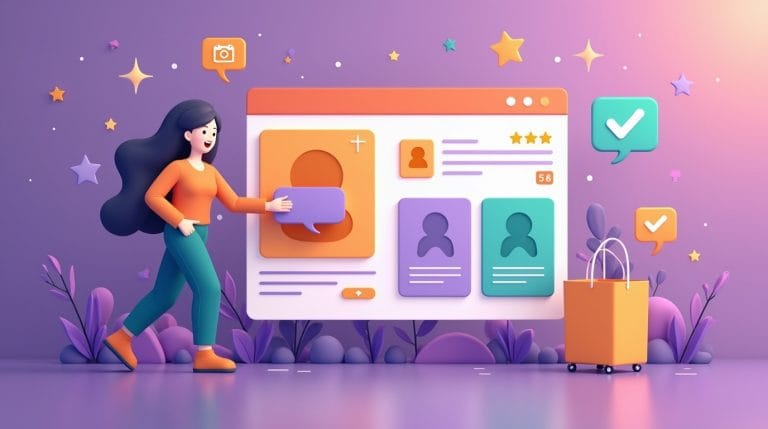Finding the right web development partner can be a real head-scratcher, but your website is too important to ignore. It’s way more than just an online presence; it’s often your first handshake with potential customers. Think of it as your digital storefront, your tireless salesperson, and a core part of your brand. Getting this decision right can mean online success versus a website that just sits there, gathering digital dust. So, how do you cut through the noise when choosing a web developer? This rundown will give you the lowdown on what makes a solid agency tick—perfect if you’re looking for someone local to you.

1. Define Your Business Requirements: Get Clear, Get Started
Before you start your search, get clear about what you need. Do you need a simple website, or something fancy like an e-commerce platform? Do you have special requirements, or will an off-the-shelf solution be enough?
- What’s the Goal?: What do you want your website to do? Drive sales, snag leads, or build brand awareness?
- Pinpoint Your Needs: This includes:
- Features: What features are must-haves? (e.g., contact forms, blogs, online stores, appointment scheduling).
- Content: What will your website include? Text, images, videos?
- Design: What look and feel fits your brand? Think about your brand’s visual style.
- Scalability: Will your website need to adapt and grow with your business?
- Set a Budget: Know how much you can spend. This will help you narrow your options.
- Timeline: When do you need this thing live by?
Having a plan from the get-go builds a strong foundation with the web development partner, helping to quickly set expectations, and paving the way for open communication.
2. Evaluate Technical Expertise: The Tech Behind the Curtain
Your chosen partner has to know their stuff. Look for a team that’s fluent in today’s web tech. Ask them about their skills with:
- Coding Languages: HTML5, CSS3, JavaScript, and possibly others depending on your project (e.g., PHP, Python, Ruby).
- Frameworks: Frameworks like React, Angular, or Vue.js can really speed things up and make for a better user experience.
- Content Management Systems (CMS): Do they know platforms like WordPress, Drupal, and Shopify inside and out?
- Security: Website security is absolutely critical. Ensure they’re following secure practices to protect your website.
- Server-Side Development: This is important if you have complex processes running on the server.
- Databases and APIs: Your site might need to chat with databases for data, and APIs to pull info from other sources.
Don’t hesitate to ask about certifications or any specific training they’ve had. A good dev team will appreciate responsive design – meaning your site looks good on any device. Also, they should grasp SEO and how to get your site ranking higher in search results.
3. Assess Portfolio and Past Work: Actions Speak Louder
A portfolio is key – a good web development partner will share their previous projects. Take a look at their past work, and investigate:
- Design Quality: Does the look and feel align with your brand? Are the designs modern, clean, and professional?
- User Experience (UX): Is the website easy to navigate? Can you easily find what you’re looking for?
- Functionality: Do the websites run smoothly and error-free? Do they demonstrate the features you need?
- Relevance: Have they worked on projects like yours? This kind of experience is invaluable.
Dig deeper. Ask what tech they used and how they handled any bumps in the road. This will give you a better picture of their skills and approach. See examples of the flashiest or most complex projects.
4. Check Client References and Testimonials: Get the Real Scoop
A portfolio shows what they can do, but clients tell you how they do it. Ask for references and talk to them directly. Ask about:
- Communication: Were they responsive and easy to work with?
- Project Management: Did they hit deadlines and stay within budget? Were you kept in the loop?
- Problem-Solving: How did they handle challenges that came up?
- Overall Satisfaction: Would they recommend the agency?
This step is so critical. It gives you honest insight that you can count on. It really helps you judge the agency’s working style, reliability, and overall quality.
5. Consider Communication and Collaboration: Keeping the Team Connected
Good, clear communication makes or breaks a project. You need to feel comfortable talking with your partner from start to finish.
- They need should respond fast.
- Do they explain tech stuff in plain English?
- Will you get regular progress updates?
- Do they want your feedback?
- Do they have the tools for good communication?
A proactive, chatty partner makes for a smooth process and a final product that hits the mark. Find out how they plan to communicate with you during the project.
6. Evaluate Project Management Approach: Staying on Course
Web projects can get complicated. A well-managed process keeps things on track. Find out:
- Methodology: Do they use Agile, Waterfall, or something else for project management?
- Milestones: Will they break the project into clear milestones?
- Progress Tracking: How will you see the progress and know the timeline?
- Reporting: Do they provide regular reports?
- Review Procedures: Do the company conduct reviews for each project?
A structured approach means fewer delays. Regular updates help you feel involved.
7. Assess User Experience (UX) and Design Capabilities: The Look and the Feel
How your website looks and feels is huge. A great-looking, easy-to-use website is going to bring in more visitors. The following things need to be considered:
- UI Design: Make sure they can make a website that is functional and looks good!
- UX Design: They should want to make sure it is easy to use.
- Branding Adherence: Align with your brand!
- Responsive Design: As mentioned, your website needs to look and work great on any device.
- Accessibility: Does the website work for all users?
- SEO Optimization: The designs should be SEO-friendly.
- Visual Hierarchy: The team should understand how to draw the attention of users to the most significant parts of the page.
8. Consider Ongoing Support and Maintenance: After the Launch
Launching is only the beginning. Choose a partner who offers:
- Support: Can they help with problems after launch?
- Maintenance: Will they handle updates, security stuff, and content adjustments?
- Training: Will they teach you how to manage your site content?
- SEO Services: Do they offer ongoing SEO services?
- Reporting: Does the team provide website performance data?
A long-term partnership makes sure your website stays fresh, secure, and meets business demands.
9. Compare Costs and Timelines: The Budget Breakdown
Get detailed, itemized quotes, and compare them side-by-side.
- Are the quotes easy to read, with no hidden fees?
- Value: Don’t just go for the lowest price.
- Get timelines for each phase.
- Look at payment options (e.g., installments).
Be wary of deals way below the average. They might not cover everything, or it could be a red flag. Remember that it’s about quality. A cheaper option isn’t always best.
10. Evaluate Company Stability/Expertise and Experience: Choose Well
Consider the team’s track record and the company’s history. A long-running company will understand your needs and provide reliable service. Consider:
- How long they’ve been around.
- Does the company have a stable team?
- Is the business financially solid?
- Do they have experience in your industry? Tailor-made solutions is the goal.
An experienced and stable partner is less likely to disappear mid-project. A stable business has a track record of satisfying past clients, with a history of high-quality work.
11. Search Local Web Developers: Find Someone Near You
If you prefer in-person meetings, consider a local developer. Direct and regular communication will do the trick. Check local business listings.
Make sure the site is Search Engine Optimized
Conclusion: Making the Right Decision When Choosing a Web Developer
Picking a web development partner is a big decision. By following these steps, you can find the ideal match. Do your homework. Ask questions. The perfect partner will be an investment, driving your business online! You now have the information necessary to choose the best web developer for your business!
Need help with your Small Business Website? Contact us at rayatech.ca for a free consultation!





